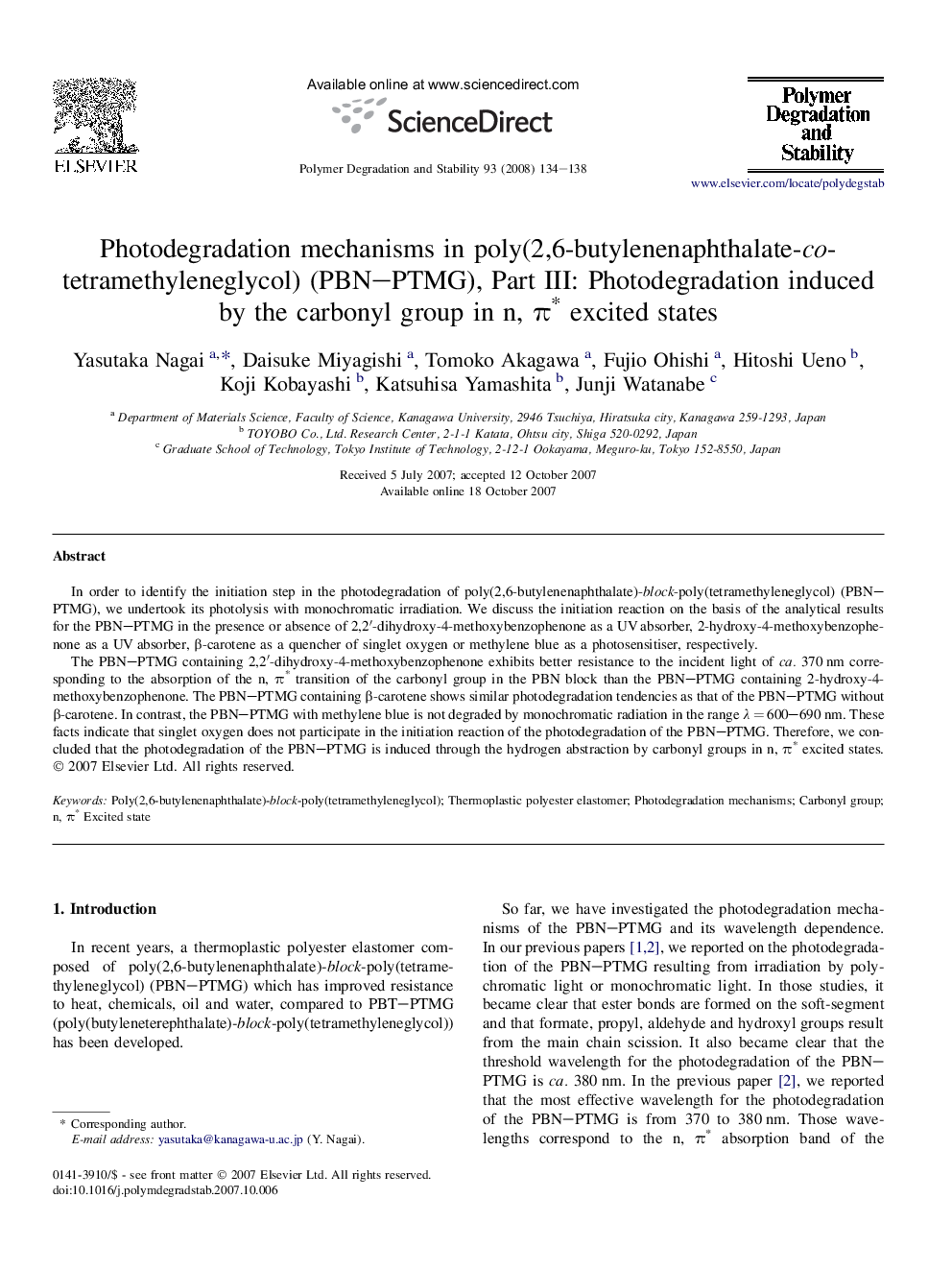| Article ID | Journal | Published Year | Pages | File Type |
|---|---|---|---|---|
| 5204648 | Polymer Degradation and Stability | 2008 | 5 Pages |
In order to identify the initiation step in the photodegradation of poly(2,6-butylenenaphthalate)-block-poly(tetramethyleneglycol) (PBN-PTMG), we undertook its photolysis with monochromatic irradiation. We discuss the initiation reaction on the basis of the analytical results for the PBN-PTMG in the presence or absence of 2,2â²-dihydroxy-4-methoxybenzophenone as a UV absorber, 2-hydroxy-4-methoxybenzophenone as a UV absorber, β-carotene as a quencher of singlet oxygen or methylene blue as a photosensitiser, respectively.The PBN-PTMG containing 2,2â²-dihydroxy-4-methoxybenzophenone exhibits better resistance to the incident light of ca. 370 nm corresponding to the absorption of the n, Ï* transition of the carbonyl group in the PBN block than the PBN-PTMG containing 2-hydroxy-4-methoxybenzophenone. The PBN-PTMG containing β-carotene shows similar photodegradation tendencies as that of the PBN-PTMG without β-carotene. In contrast, the PBN-PTMG with methylene blue is not degraded by monochromatic radiation in the range λ = 600-690 nm. These facts indicate that singlet oxygen does not participate in the initiation reaction of the photodegradation of the PBN-PTMG. Therefore, we concluded that the photodegradation of the PBN-PTMG is induced through the hydrogen abstraction by carbonyl groups in n, Ï* excited states.
